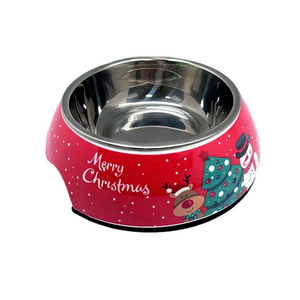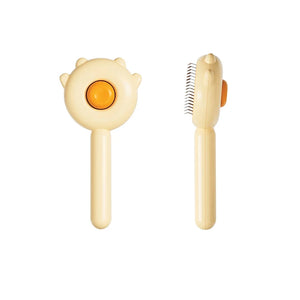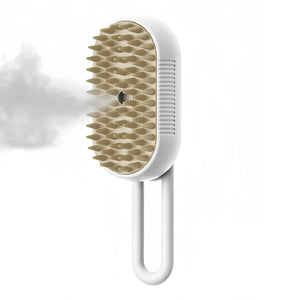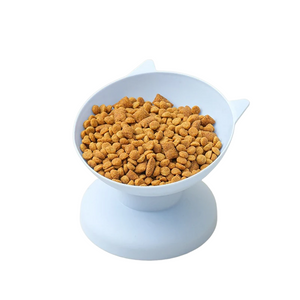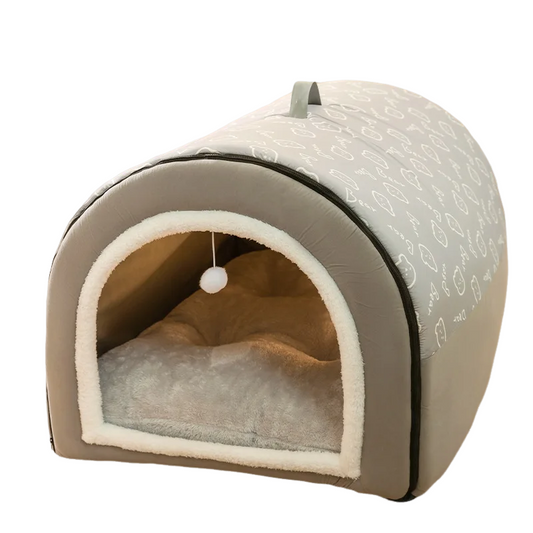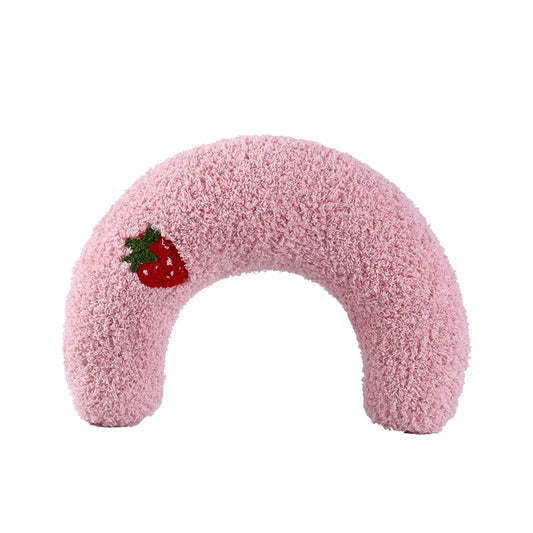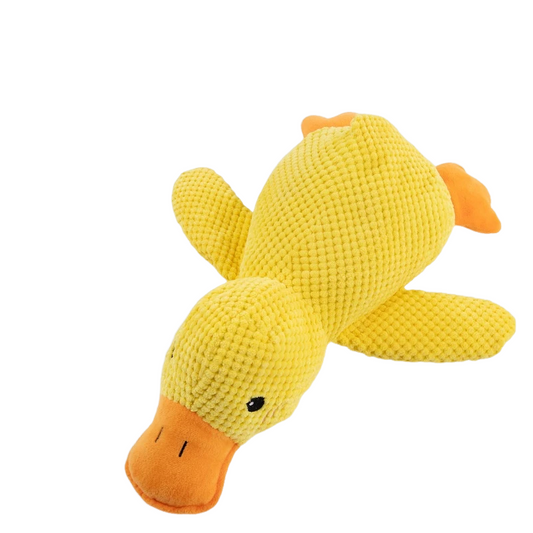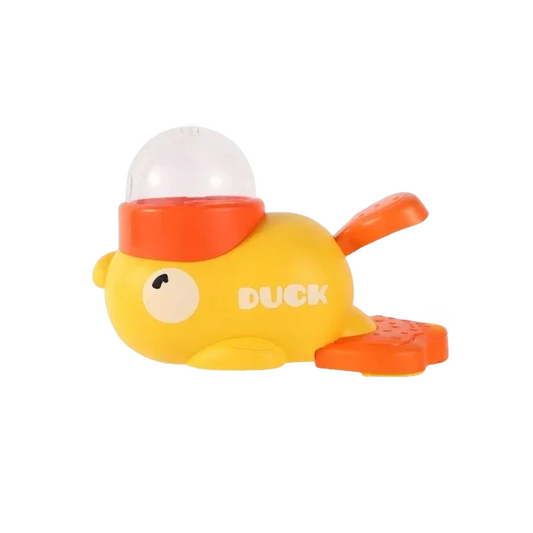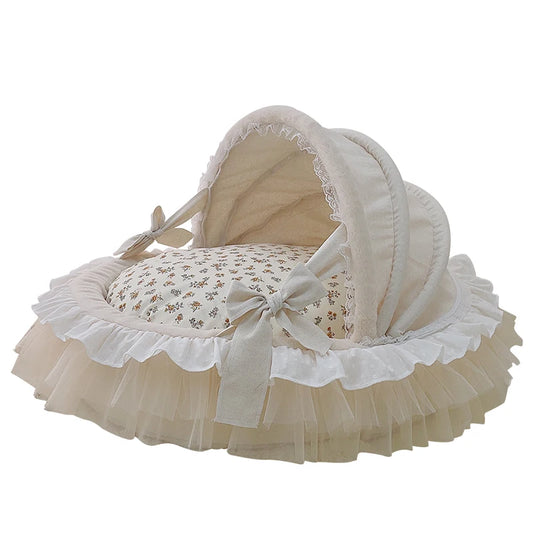
The Ultimate New Dog Owner's Guide: Essential Tips for Caring for Your Furry Friend
Share
Introduction
Welcome to your first dog blog! Whether you’re a first-time dog owner or an experienced one, bringing a new furry friend into your life is always exciting. However, for those new to dog ownership, figuring out how to properly care for your new companion can feel overwhelming. This blog will provide you with comprehensive guidance to help you get started, ensuring that your dog stays healthy, happy, and forms a strong bond with you.
1. Basic Dog Care: Essential Tips for New Dog Owners
Choosing the Right Dog Food and Water Bowl: A Comprehensive Guide
Your dog's health starts with the right diet, and selecting the appropriate dog food is key. Whether you're a first-time dog owner or a seasoned pet parent, choosing the right food can be challenging. With various types of dog food available, such as dry kibble, wet food, and raw diets, it's essential to select food that meets your dog’s age, size, activity level, and health requirements.
Dry Food:
Dry kibble is a popular choice for many dog owners due to its ease of storage and ability to help maintain dental health by reducing plaque buildup. However, be aware that dry food can lack moisture, which may lead to dehydration or urinary issues, especially in dogs that don’t drink enough water.
Wet Food:
Wet food offers higher moisture content, making it a great option for picky eaters or dogs needing extra hydration. However, it can be more expensive and spoils quickly if left out.
Raw Diet:
Some owners opt for raw diets, which include raw meat, bones, and vegetables. While this diet mimics what dogs' ancestors would have eaten, it requires careful handling to ensure food safety and may not be suitable for all dogs.
No matter which type of food you choose, ensuring your dog receives a balanced diet is crucial. Always consult your veterinarian or a pet nutritionist to ensure your dog’s dietary needs are met.
Selecting a Proper Water Bowl:
Providing your dog with enough water is essential for maintaining their overall health. Here are some water bowl options:
- Stainless Steel Bowls: Durable, easy to clean, and resistant to bacteria. Ideal for large or active dogs due to their sturdiness.
- Ceramic Bowls: Heavier and less likely to tip over, but prone to chipping. Regular inspection is necessary to avoid sharp edges.
- Plastic Bowls: Lightweight and inexpensive but can scratch easily, harboring bacteria. Replace frequently if you choose this option.
- Our Cute Cartoon Ceramic Pet Bowl will be a good choice for your lovely baby.
Best Practices for Daily Dog Feeding: Tips for Puppies and Adult Dogs
Establishing a consistent feeding schedule is essential for your dog’s health and behavioral management. Regular mealtimes help stabilize blood sugar levels, reduce picky eating habits, and support proper digestion.
Puppy Feeding:
Puppies grow quickly and require more frequent meals to support their development. Typically, puppies need to be fed three to four times a day. Adjust portion sizes according to the puppy’s size and activity level.
Adult Dog Feeding:
Most adult dogs thrive on two meals a day—one in the morning and one in the evening. A regular feeding schedule also helps establish a routine for bathroom breaks and prevents overeating.
Hydration:
Always ensure your dog has access to fresh water, especially during hot weather or after exercise. Keeping your dog hydrated is vital to their well-being, so regularly check that their water bowl is full and clean.
Avoiding Toxic Foods:
Avoid feeding your dog human food, especially items that are toxic to dogs, such as chocolate, grapes, onions, and garlic. These foods can cause serious health issues, including poisoning. Additionally, discourage begging for table scraps, as this can lead to obesity and bad habits.
Key Points for Dog Health Care: Vaccinations, Deworming, and More
Maintaining your dog’s health goes beyond diet; regular veterinary check-ups and proper care are essential for their well-being.
Vaccinations:
Your dog’s vaccination schedule should be tailored to their age and living environment. Puppies typically require a series of vaccinations, including rabies, distemper, parvovirus, and adenovirus. Adult dogs should receive booster shots as recommended by your vet.
Deworming Schedule:
Regular deworming is key to maintaining your dog’s health. Internal parasites like roundworms and tapeworms can harm your dog’s digestive system, while external parasites like fleas and ticks can cause discomfort and spread diseases. Stay on top of a deworming schedule, especially for dogs that spend a lot of time outdoors.
Dental Care:
Oral health is often overlooked but is vital to your dog's overall health. Dental issues can lead to gum disease, tooth loss, and even systemic infections. Brush your dog’s teeth daily or several times a week, and provide dental chews and toys to reduce plaque buildup.
Routine Checkups:
In addition to annual veterinary visits, regularly inspect your dog’s skin, coat, eyes, ears, and teeth for signs of problems. If you notice unusual symptoms like lumps, excessive scratching, or discharge from the eyes or ears, consult your vet as soon as possible.
By combining daily care, proper nutrition, and routine health checks, you can ensure your dog remains happy and healthy. A well-cared-for dog enjoys a better quality of life, strengthening the bond you share with them.

2. Daily Dog Care and Maintenance: Keep Your Dog Clean, Healthy, and Happy
Regular Grooming: Keeping Your Dog Clean and Tidy
Regular grooming is essential for maintaining your dog's appearance and preventing various health issues. Different dog breeds have specific grooming needs, so understanding your dog's requirements is crucial for their well-being.
Brushing: Removing Loose Hair and Promoting Skin Health
Brushing is a vital part of daily care, especially for long-haired dogs prone to matting, which can lead to skin problems if not properly managed. Brushing daily or several times a week removes loose hair and debris while stimulating blood circulation to keep the skin healthy.
Even short-haired dogs benefit from occasional brushing. Regular brushing can help remove dead skin cells and keep their coat shiny. Additionally, brushing can be a bonding experience between you and your dog. If your dog resists brushing, try positive reinforcement with treats or playtime.
When choosing a brush, long-haired dogs do well with wide-toothed combs or pin brushes, while short-haired dogs can use rubber or bristle brushes to avoid irritating their skin. Use Electric Pet Spray Comb can help your little friends to keep clean anywhere at anytime.
Bathing: Maintaining Coat and Skin Health
While dogs don't need frequent baths, regular cleaning is essential for maintaining their skin and coat health. Generally, dogs should be bathed about once a month, though this varies depending on their activity level, breed, and any specific skin conditions.
Always use a pet-friendly, mild shampoo, as human shampoos can be too harsh. During the bath, focus on areas that collect dirt, such as the belly, legs, paws, and ears. Afterward, ensure your dog’s coat is thoroughly dried to prevent skin infections caused by moisture.
For nervous dogs, use a non-slip mat in the tub to prevent slipping and a handheld showerhead for gentle rinsing. Avoid pouring water directly over your dog's head, as this can be stressful.
Nail Trimming: Preventing Pain and Walking Difficulties
Nail trimming is a crucial part of dog care that’s often overlooked. Overgrown nails can cause discomfort, walking difficulties, or nail breakage, leading to pain and infections. Dogs generally need their nails trimmed every 3 to 4 weeks, depending on their activity level and nail growth.
If you're unsure how to trim your dog's nails, consult your veterinarian or a professional groomer. Be careful not to cut too close to the quick, as this can cause bleeding. Use styptic powder to stop any bleeding.
Gradually introduce nail trimming as part of your dog’s routine with rewards and praise to make the experience more positive.
Ear Care: Keeping Ears Clean and Infection-Free
Your dog’s ears can collect dirt, wax, and moisture, especially in breeds with floppy ears. Regular ear checks and cleaning are essential for preventing ear infections.
Use a veterinarian-recommended ear cleaner to gently wipe the outer ear canal, avoiding insertion into the inner ear. Watch for signs of infection, such as bad odors, discharge, or redness. If you notice any symptoms, consult your vet immediately.
Dental Care: Preventing Oral Health Issues
Oral health is another critical aspect of daily grooming. Issues like gingivitis, tartar buildup, and periodontal disease can lead to bad breath, tooth loss, and severe health problems.
To prevent these issues, brush your dog’s teeth regularly using a pet-specific toothbrush and toothpaste. Provide dental chews and toys to help remove food particles and plaque.
Regular Checkups and Vet Consultations: Ensuring Your Dog's Health
In addition to grooming, regular health checkups are vital for your dog’s overall well-being. Monitor your dog's skin, coat, eyes, ears, and teeth regularly to spot potential issues early. Look for signs of redness, swelling, hair loss, abnormal discharges, or unusual lumps.
Annual veterinary checkups are essential, but more frequent visits may be necessary depending on your dog’s age and health. These checkups help detect underlying health issues early, allowing for timely intervention.
During vet visits, your vet will recommend preventive measures such as vaccinations, heartworm prevention, and flea and tick control. If you notice sudden changes in your dog’s behavior, appetite, weight, or overall health, contact your vet promptly.
By combining regular grooming with routine health checkups, you ensure your dog remains clean, healthy, and happy. A well-groomed dog is more comfortable and less prone to health issues, while regular vet visits help them live a long, fulfilling life as your trusted companion.

3. Training and Behavior Management: Building a Well-Behaved and Happy Dog
Basic Command Training: Establishing a Foundation for Good Behavior
Training your dog doesn't require complex techniques—it's all about patience, consistency, and positive reinforcement. Starting with basic commands like "sit," "stay," and "come" helps establish effective communication between you and your dog, laying the groundwork for more advanced training.
"Sit" Command
The "sit" command is one of the most fundamental and frequently used commands. To train your dog to sit, hold a treat close to their nose and slowly move your hand upward. As your dog's head follows the treat, their bottom will naturally lower to the ground. Once they sit, immediately reward them with the treat and praise them with a verbal cue like "good dog!" Repeat this exercise until your dog reliably responds to the "sit" command.
"Stay" Command
The "stay" command is crucial for managing your dog's behavior in various situations. Start by asking your dog to sit, then raise your hand with your palm facing them and say "stay" in a firm, clear voice. If your dog remains in place for a few seconds, reward them with a treat. Gradually increase the duration of the stay and the distance between you and your dog. Always end the training session on a positive note, ensuring your dog feels successful.
"Come" Command
The "come" command is essential for your dog's safety, especially in outdoor environments. Begin by letting your dog roam freely, then call their name in a cheerful tone followed by the command "come." When your dog runs towards you, reward them generously. Make sure this exercise is fun and engaging so that your dog associates coming to you with positive experiences.
Positive Reinforcement in Training: Encouraging Good Behavior
Positive reinforcement is a highly effective tool in dog training. By using treats, toys, or verbal praise, you can encourage your dog to complete tasks and reinforce good behavior. Consistently rewarding your dog for following commands will help them learn faster and make training a positive experience. Avoid using punishment, as it can lead to anxiety and mistrust, hindering training progress.
Keep training sessions short and sweet, ideally between 10-15 minutes. This ensures that your dog remains focused and interested. If sessions are too long, your dog may become bored or frustrated, reducing the effectiveness of the training.
Addressing Common Behavior Problems: From Chewing to Excessive Barking
Dogs may exhibit various behavior problems, such as chewing, excessive barking, or house soiling. Understanding the reasons behind these behaviors and implementing the right strategies can help you manage them effectively.
Chewing
Chewing is a natural behavior, especially during the teething phase or when a dog is bored. Puppies often chew to soothe their gums, while adult dogs may chew out of boredom or anxiety. To address this behavior, provide plenty of appropriate chew toys. Offer toys like durable rubber toys, plush toys, or puzzle toys that keep your dog entertained and satisfy their need to chew.
Ensure valuable items and household objects are out of your dog’s reach. If your dog tries to chew on furniture or other inappropriate items, redirect them to their toys and reward them when they make the correct choice.
Excessive Barking
Barking is a natural way for dogs to communicate, but excessive barking can become a problem. This behavior often stems from anxiety, boredom, lack of exercise, or overreacting to external stimuli. Identify the root cause of the barking—whether it's pent-up energy or reacting to strangers or other animals.
Increase your dog’s physical activity to help them burn off excess energy. Regular walks, playtime, and socialization can reduce barking caused by boredom or anxiety. Socialization training can help your dog become more accustomed to various stimuli, making them less reactive. Providing calming toys or chewables can also help soothe a nervous dog.
House Soiling
House soiling is a common issue, especially for puppies or newly adopted dogs that haven't been fully housetrained. Establish a consistent bathroom schedule for successful house training. Take your dog outside regularly, especially after meals, drinking water, playing, or waking up.
When your dog eliminates in the appropriate spot, reward them with treats and praise to reinforce the behavior. Over time, they will learn that going to the bathroom outside or in the designated area results in positive outcomes. If your dog has an accident indoors, avoid punishment. Instead, clean up the mess thoroughly to remove any lingering odors that might encourage them to go in the same spot again.
By being patient, using positive reinforcement, and effectively managing your dog’s behavior, you can build a strong, trusting relationship with your pet. This not only helps in raising a well-behaved dog but also creates a harmonious environment for both you and your furry companion.

4. The Importance of Socialization: Helping Your Dog Thrive in a Diverse World
The Critical Period of Socialization: Building Confidence and Adaptability
Socialization is one of the most crucial aspects of a dog’s development. It involves exposing your dog, especially during the puppy stage, to various environments, people, and animals. This exposure helps your dog adapt to different situations throughout their life, reducing the likelihood of fear, anxiety, and aggression as they mature.
When to Start Socialization
The critical period for socialization is between 3 to 14 weeks of age, making this the ideal time to introduce puppies to new sights, sounds, and experiences. Early socialization builds confidence and teaches puppies to handle unfamiliar situations with ease. However, even adult dogs can benefit from socialization, though it may require more time and patience.
How to Socialize Your Dog: Steps for Successful Socialization
To effectively socialize your dog, start by introducing them to a variety of people, including men, women, children, and individuals in different clothing (e.g., hats, sunglasses). Let them experience different environments, such as busy streets, quiet parks, and indoor settings like pet-friendly cafes.
Gradual Socialization
Begin with short, positive encounters with other dogs and gradually increase the complexity of social interactions. For example, after successful introductions, you can move on to more complex environments like dog parks or doggy daycare. Pair each new experience with rewards, such as treats or praise, to reinforce good behavior.
Exposing Your Dog to Different Situations
Beyond meeting new people and dogs, socialization also involves exposing your dog to various situations, including car rides, vet visits, grooming sessions, and walking on different surfaces like grass, gravel, or stairs. These experiences help your dog become more adaptable and less likely to be startled by new challenges.
Monitor your dog’s reactions during socialization. If they appear overwhelmed or fearful, take a step back and reintroduce the experience more gradually. The goal is to create positive associations, so patience and observation are key.
Long-Term Benefits of Socialization: A Happier, Healthier Dog
Socialization has numerous long-term benefits for your dog’s emotional and physical well-being. A well-socialized dog is often more confident, friendly, and calm when encountering new situations. This not only enhances their quality of life but also makes them a more enjoyable companion.
Emotional Health
Socialized dogs are less likely to develop behavioral issues such as excessive barking, aggression, or separation anxiety. They are better equipped to handle stress and remain calm in unfamiliar environments, contributing to their emotional stability and overall happiness.
Physical Health
Regular socialization helps your dog stay physically active. Social activities like walks, playdates, and trips to the dog park provide the exercise needed for a healthy weight, strong muscles, and overall well-being.
Reducing Destructive Behavior
Well-socialized dogs tend to have lower levels of excess energy, reducing the likelihood of destructive behaviors such as chewing furniture or digging in the yard. Regular interaction with other dogs and people provides mental stimulation and helps burn off energy that might otherwise be directed toward negative behaviors.
Socialization Benefits for Dog Owners: Strengthening Your Bond
Socialization isn’t just beneficial for your dog—it also offers significant advantages for you as a dog owner. Participating in social activities with your dog allows you to better understand their needs and preferences. Interacting with other dog owners provides opportunities to exchange valuable tips and advice on dog care and training.
Socialization activities can also be a source of joy and fulfillment. Whether it’s watching your dog make new friends at the park or enjoying a leisurely coffee at a pet-friendly café, these experiences strengthen the bond between you and your dog, making your time together even more rewarding.

Recommended Products For Your New Friends:
- Dog Feeding Accessories: Automatic feeders and water dispensers to ensure your dog has access to fresh food and water.
- Grooming Tools: Brushes and combs that help reduce shedding and prevent hairball formation.

